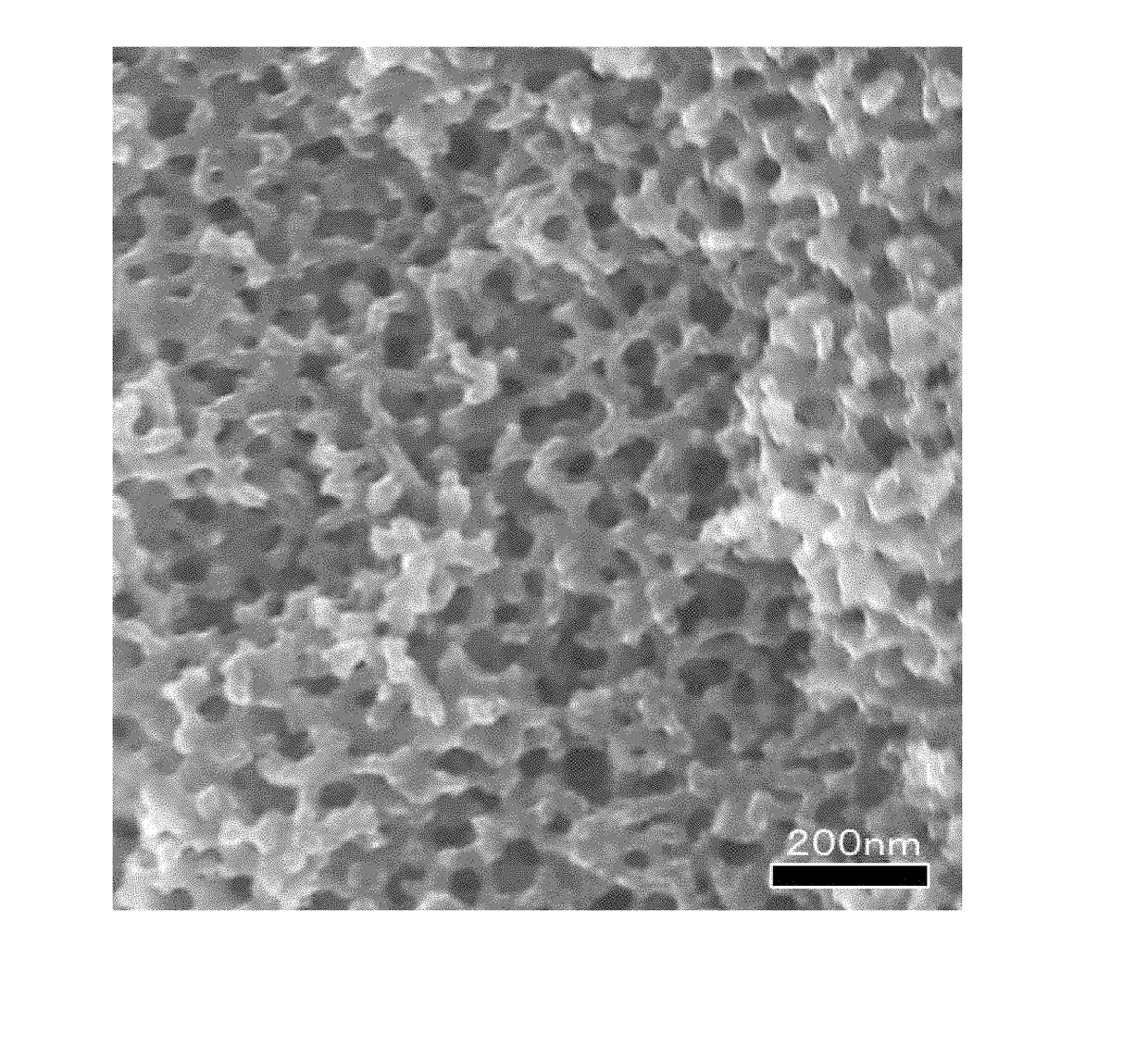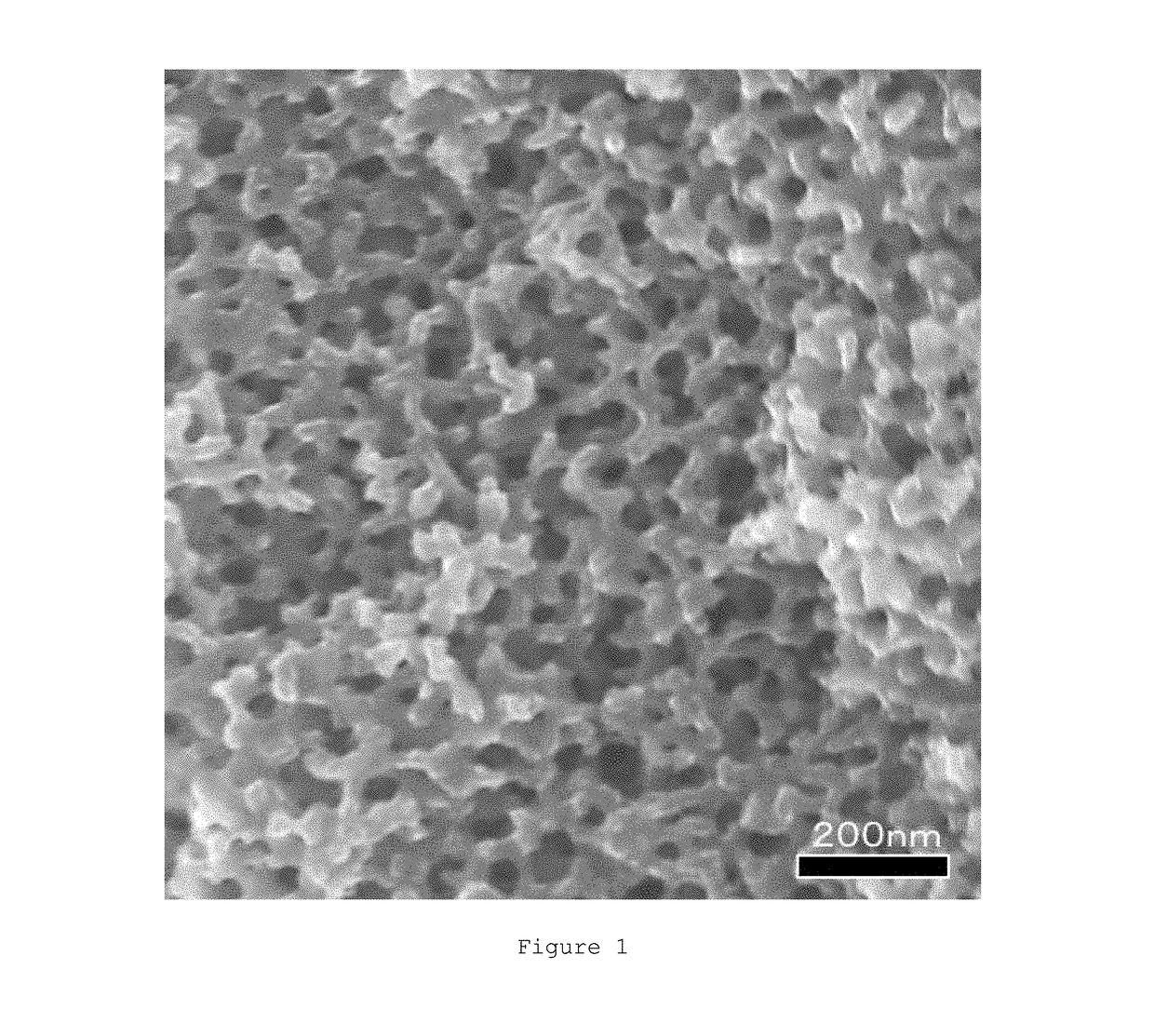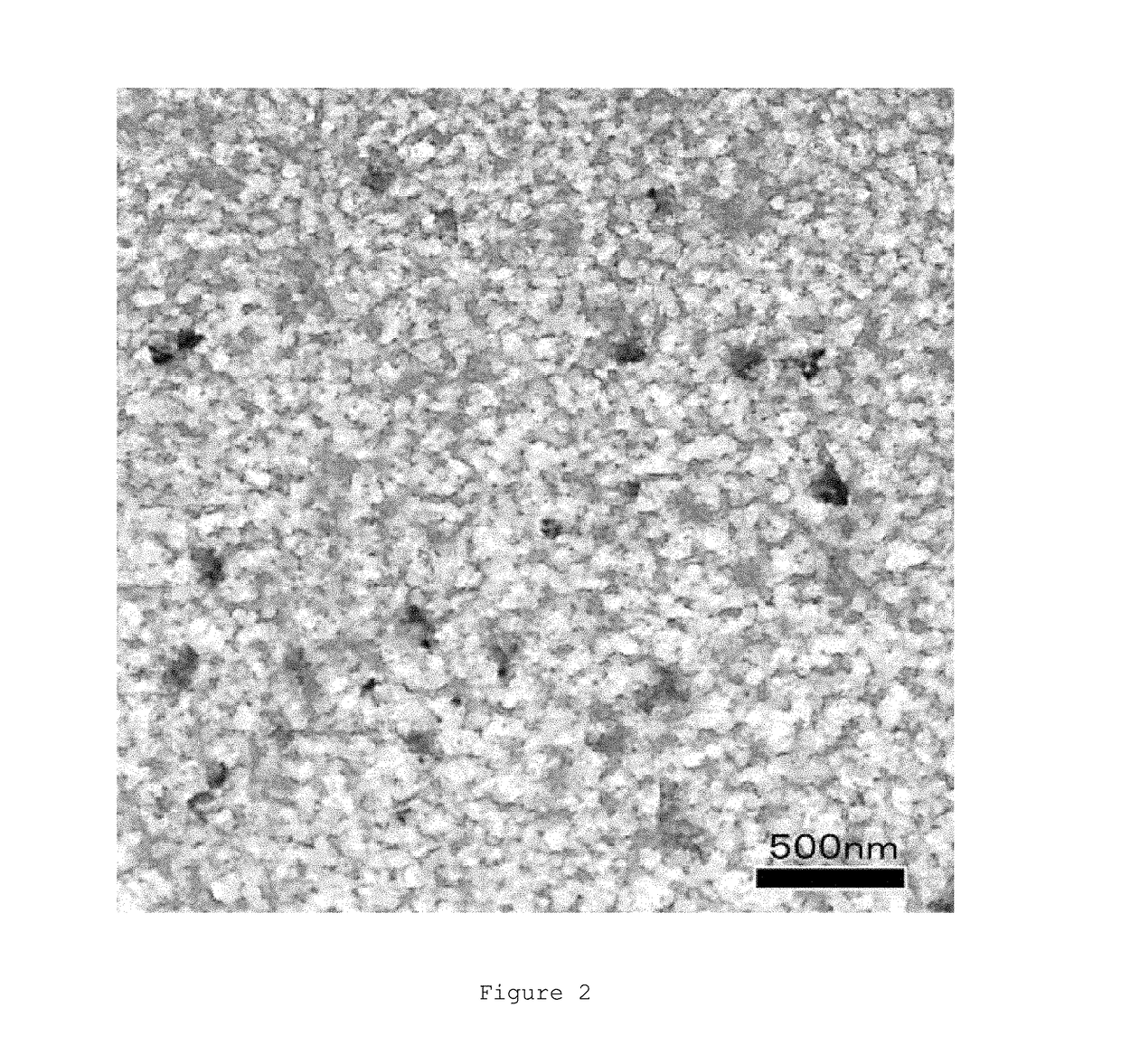Porous carbon material
a technology of porous carbon and carbon fiber, applied in the field of porous carbon fiber, can solve the problems of insufficient electrical conductivity, thermal conductivity, strength, etc., and achieve the effects of improving mechanical properties such as tension or compression, electrical conductivity and thermal conductivity, and increasing the degree of resistance to deformation
- Summary
- Abstract
- Description
- Claims
- Application Information
AI Technical Summary
Benefits of technology
Problems solved by technology
Method used
Image
Examples
example 1
[0144]Into a separable flask were introduced 70 g of polyacrylonitrile (Mw, 150,000) manufactured by Polysciences, Inc., 70 g of polyvinylpyrrolidone (Mw, 40,000) manufactured by Sigma Aldrich, and 400 g of dimethyl sulfoxide (DMSO) manufactured by Wakenyaku Co. Ltd., as a solvent. The contents were heated at 150° C. for 3 hours with stirring and refluxing, thereby preparing an even and transparent solution. In this solution, the concentration of the polyacrylonitrile and the concentration of the polyvinylpyrrolidone were 13% by weight each.
[0145]The DMSO solution obtained was cooled to 25° C. and then ejected at a rate of 3 mL / min from a one-orifice nozzle having an orifice diameter of 0.6 mm, and the extrudate was led into a pure-water coagulating bath kept at 25° C., subsequently taken off at a rate of 6 m / min, and accumulated in a vat to thereby obtain raw fibers. In this operation, the air gap was set at 5 mm, and the length of immersion in the coagulating bath was 15 cm. The r...
example 2
[0152]Porous carbon fibers were obtained in the same manner as in Example 1, except that the carbonization temperature was 2000° C. and the atmosphere was changed from nitrogen to argon at a temperature of not less than 1500° C. The results are shown in Table 1.
example 3
[0153]Porous carbon fibers were obtained in the same manner as in Example 1, except that the carbonization temperature was 2500° C. and the atmosphere was changed from nitrogen to argon at a temperature of not less than 1500° C. The results are shown in Table 1.
PUM
| Property | Measurement | Unit |
|---|---|---|
| size | aaaaa | aaaaa |
| diffraction angle | aaaaa | aaaaa |
| diffraction angle | aaaaa | aaaaa |
Abstract
Description
Claims
Application Information
 Login to View More
Login to View More - R&D
- Intellectual Property
- Life Sciences
- Materials
- Tech Scout
- Unparalleled Data Quality
- Higher Quality Content
- 60% Fewer Hallucinations
Browse by: Latest US Patents, China's latest patents, Technical Efficacy Thesaurus, Application Domain, Technology Topic, Popular Technical Reports.
© 2025 PatSnap. All rights reserved.Legal|Privacy policy|Modern Slavery Act Transparency Statement|Sitemap|About US| Contact US: help@patsnap.com



